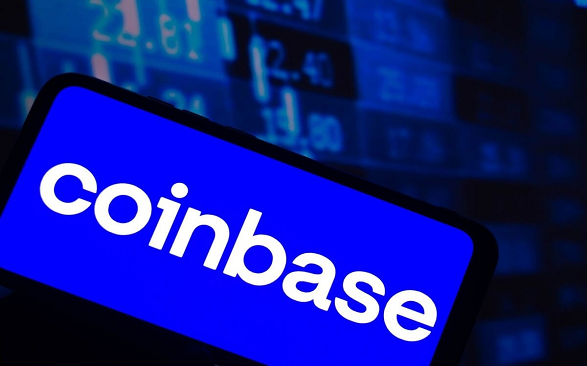As bitcoin approaches its fourth halving event, scheduled for 20 April 2024, investors are eagerly anticipating its impact on the cryptocurrency market. This report delves into the significance of Bitcoin halving and what investors can expect in the aftermath. The question on the lips of most investors is, How far could bitcoin go after the coming halving?
The Next Bitcoin Halving Event
Bitcoin halving, a recurring event programmed into the Bitcoin protocol, reduces the rate at which new bitcoins are issued by 50%. This process occurs approximately every four years, with the upcoming halving slated to decrease the block reward from 6.25 to 3.125 bitcoins per block.
Bitcoin halving events often coincide with crypto bull runs, characterized by sustained upward movements in prices. These bull runs are fueled by factors such as positive market sentiment, regulatory clarity, institutional adoption, and macroeconomic conditions.
While Bitcoin remains the focal point of halving events, other major blockchain ecosystems like Ethereum, Binance Smart Chain (BSC), and Solana also experience significant market dynamics in the bull run. However, Bitcoin halving events have historically set a precedent for market movements across the broader crypto landscape.
Read also: Bitcoin at all-time high of over $73,000: What is fueling the surge in the crypto market?
2024 Bull Run: What to expect
There are several factors affecting the current bull run including the inflows into spot bitcoin ETFs, bitcoin hash rate, fear and greed index, and the rise in crypto stock prices as indicators of bullish sentiment.
For crypto investors, understanding the implications of Bitcoin halving events is crucial for making informed decisions. While historical trends suggest post-halving price increases followed by adjustments, market dynamics and external factors can influence outcomes
Bitcoin’s halving events serve as a benchmark for other cryptocurrencies that adopt similar mechanisms to control token supply. Understanding the nuances of these events provides insights into market behaviors and investor sentiments across different blockchain ecosystems.
The increasing participation of institutions in the crypto market reshapes its dynamics, bringing credibility and stability while expanding demand and utility for digital assets like Bitcoin.
As of the time of writing, Bitcoin (BTC) is currently trading at $64,600, reflecting a -8.8% price decline over the past seven days, per data on CoinGecko. BTC dominance stands at 54.58%, indicating its continued dominance in the cryptocurrency market.
On the daily time frame, the Bitcoin Relative Strength Index (RSI) is at 55.77, suggesting a neutral sentiment among traders. However, the crypto fear and greed index is at 66, signaling greed among investors, possibly influenced by the excitement in the market ahead of the Bitcoin Halving.
While the $65,000 level serves as a critical support level, a break below this level could lead to further downside potential. Conversely, if bullish momentum persists, BTC has the potential to surge to new highs, albeit with caution given the prevailing market sentiment and economic uncertainties.
There have been several price predictions for Bitcoin, considering factors like global economic conditions, inflation concerns, and regulatory uncertainties.
In December 2023, Matrixport, a crypto financial services company predicted that Bitcoin will reach $63,140 by April 2024 and $125,000 by the end the year. The British multinational bank, Standard Chartered is also optimistic about the future price of Bitcoin getting to $100,000 by the end of 2024, whereas other analysts advocate for cautious optimism and risk management.
The recent Chainalysis report provides valuable insights into the significance of Bitcoin halving events, emphasizing their role in ensuring the scarcity and value of Bitcoin over time. As a recurring, programmed event within the Bitcoin protocol, halving events reduce the number of new Bitcoins issued by 50%, ultimately contributing to Bitcoin’s deflationary nature.
The report highlights the attention surrounding the upcoming fourth halving, particularly due to increased institutional engagement since the last halving in 2020 and the integration of traditional financial products like exchange-traded funds (ETFs). Notably, the combination of reduced block rewards and significant institutional holdings of Bitcoin suggests a compounding supply shock, potentially leading to upward price movements.
With previous halvings preceding substantial price jumps for Bitcoin, the report underscores the anticipation of a similar market upswing following the upcoming halving event, further solidifying Bitcoin’s role as a store of value and investment asset.
Read also:
In an interview with CAB, Rume Ophi, a crypto analyst, offers a cautious perspective on bitcoin price trajectory amidst the anticipation of the fourth halving event, citing global economic uncertainties and the potential impact of the U.S. Federal Reserve’s monetary policies. Expressing reservations about calling precise price targets, Ophi emphasizes the complexities of economic dynamics, particularly regarding inflation and interest rate decisions.
“I’m not going to call an exact price but considering what is going on economically in the world’s global economy, I don’t see BTC going astronomically high, as $150k to $200k by the end of this year,” says Rume.
With a focus on risk management and a nuanced understanding of market trends, Ophi underscores the importance of exercising caution amid the prevailing economic uncertainties, cautioning against overly optimistic projections for bitcoin price performance in 2024.
Read also: How to Distinguish a Bull Run from a Bull Trap
Conclusion
Crypto bull runs can vary in duration but typically span several months. Interestingly, bull runs often align with Bitcoin halving events, occurring approximately every four years. These halving events gradually reduce the rate at which new bitcoins are created, creating scarcity and driving up demand, thus contributing to bull runs. It’s important to note that bull runs are not indefinite and could be followed by periods of price correction or consolidation.
Read also:
Is the next bitcoin halving in 2024 going to be the magic wand for a bullish run?
Credit: Solomon Victor is a Technical Analyst who is also knowledgeable about various aspects of blockchain and cryptocurrency.
Discover more from Crypto Asset Buyer
Subscribe to get the latest posts sent to your email.




